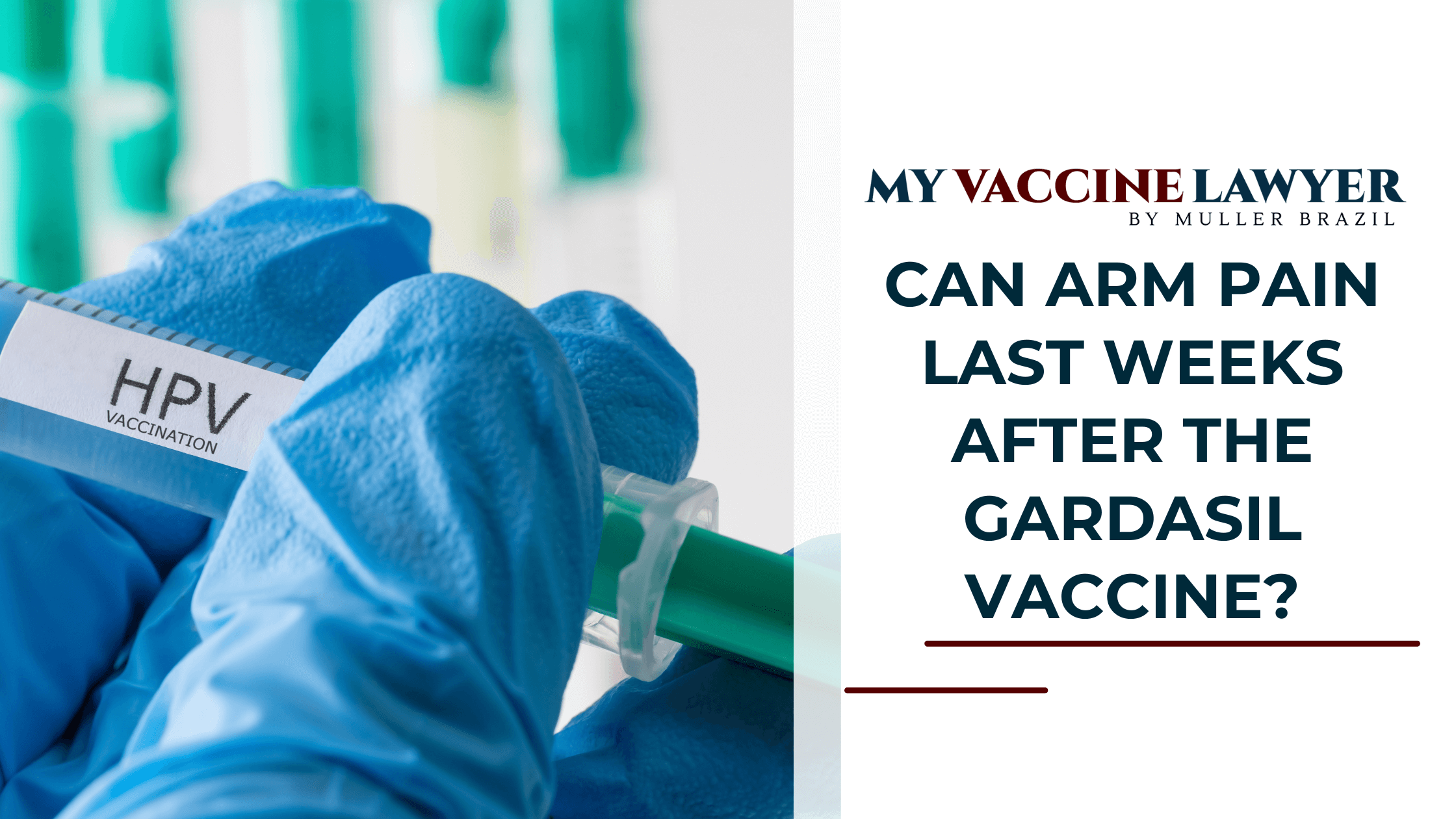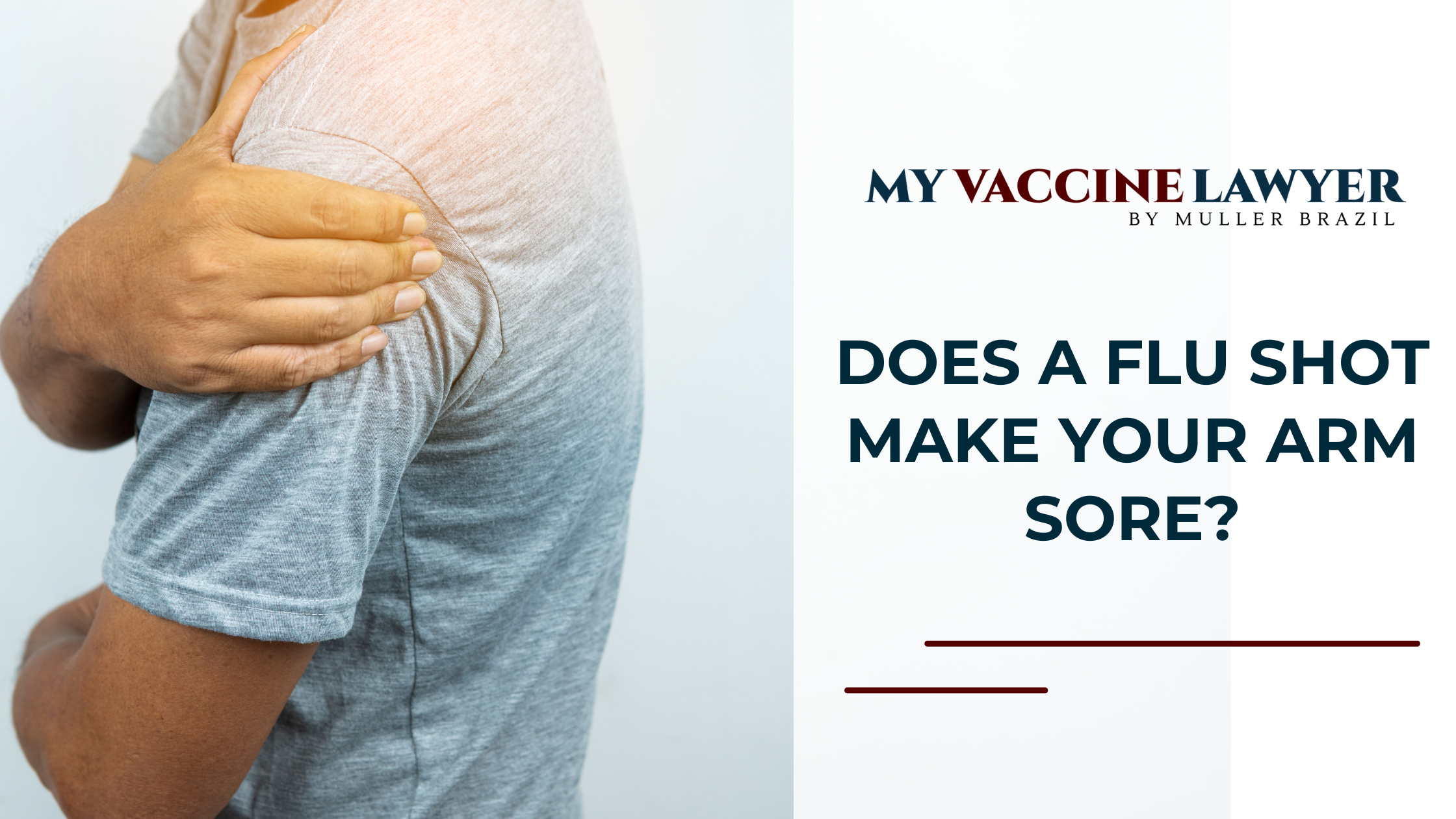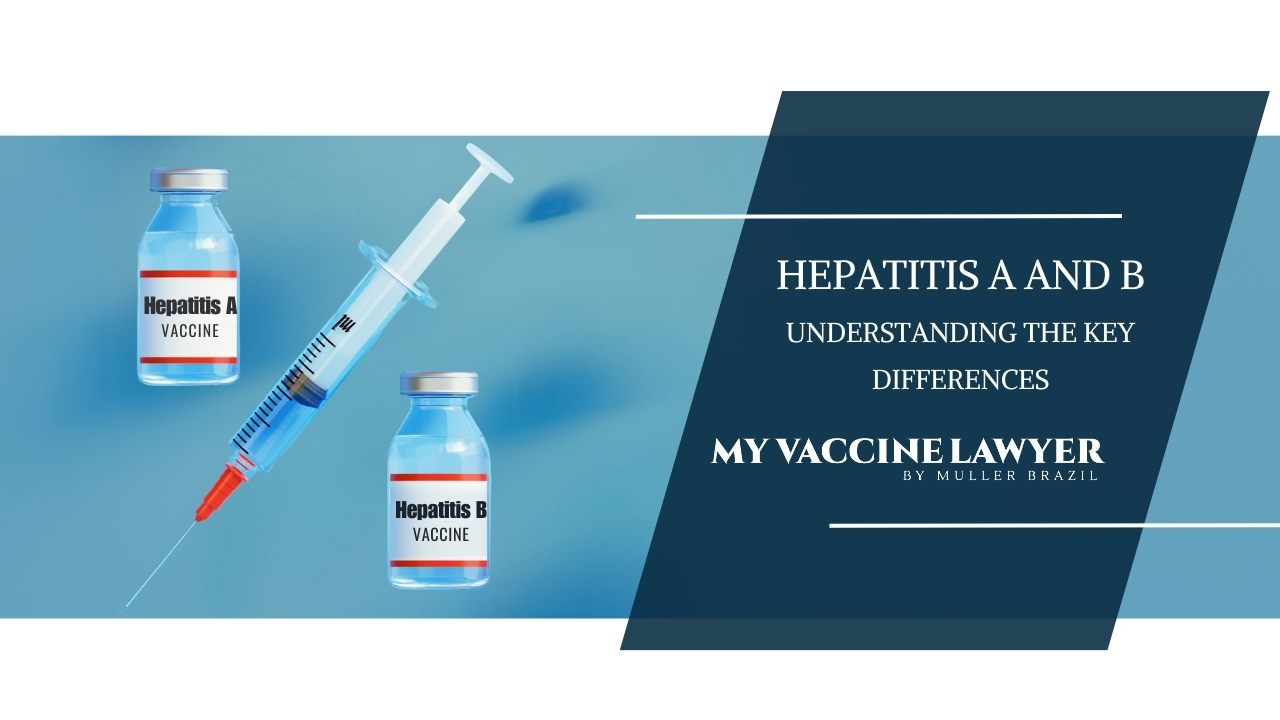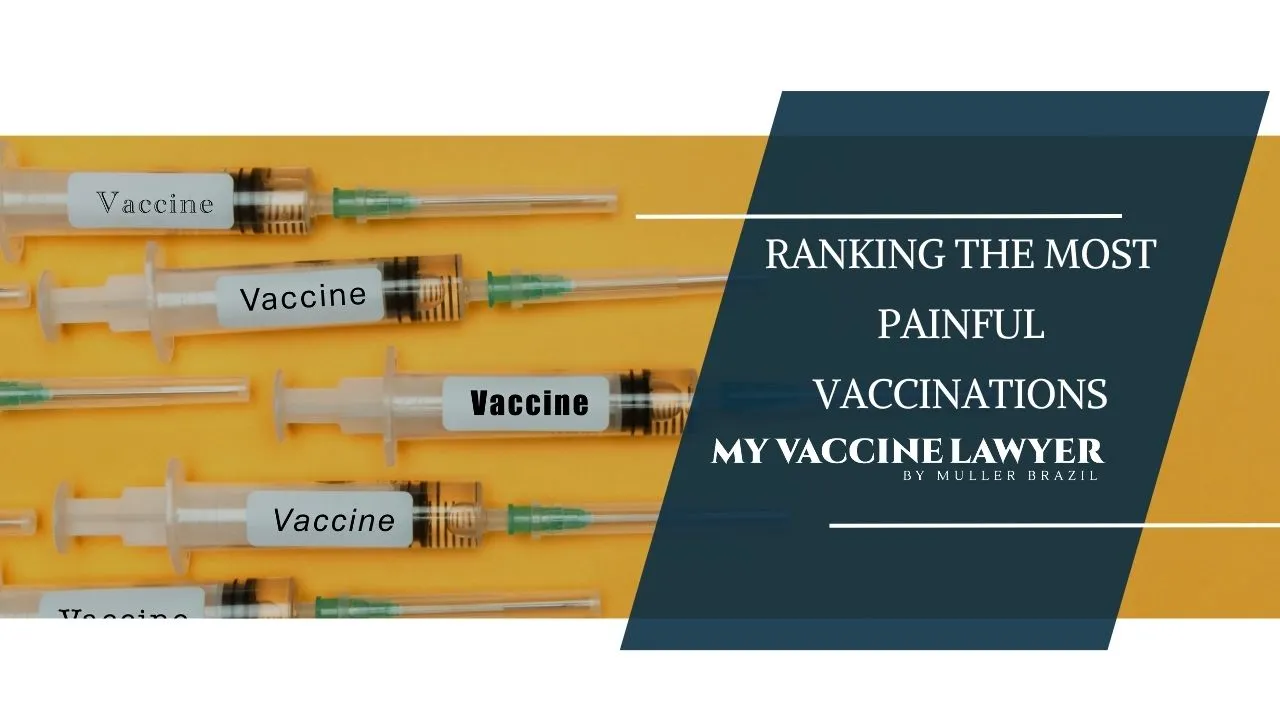Can Arm Pain Last Weeks After the Gardasil Vaccine?
Arm pain after the Gardasil shot is usually mild and short-lived, but if it persists for weeks, it could be a sign of SIRVA or another...
7 min read
Vaccine Injury Law Resources / Arm Pain / Ranking the Most Painful Vaccinations: Immunization Discomfort
 Max Muller
:
Jan 11, 2024 12:43:00 PM
Max Muller
:
Jan 11, 2024 12:43:00 PM
Some vaccines hurt more than others due to factors like the injection method, vaccine ingredients, and individual sensitivity relating to genetics and age. Shots administered deep into the muscle, for instance, tend to be more painful than those given just under the skin. Using the correct needle size and the proper injection site can greatly reduce discomfort. If you're nervous about needles, adopting effective coping strategies can make the experience less stressful, improving your overall comfort during vaccinations.
But have you ever wondered why some vaccines hurt more than others? Or what factors contribute to this pain? Let’s explore the world of the most painful vaccinations, from their causes and comparisons to effective coping strategies.
Vaccine-related pain is a complex phenomenon influenced by various factors, including:
Understanding these elements better equips us to improve patient experiences and develop strategies to minimize discomfort.
Individual differences such as age, genetics, and gender can greatly influence the pain experienced during vaccinations. Vaccine components, including antigens and adjuvants, can lead to varying inflammation and pain levels. Administration methods, such as the injection speed and needle size, can also significantly impact the pain experienced.
We will explore these contributing factors in more detail in the ensuing sections.
We all react differently to pain; the same is true for vaccine-related pain. Several factors, including our genetic makeup, influence this disparity. Studies involving twins have shown that genetics can explain approximately 50% of the variation in chronic pain perception. This means that your genes could significantly impact how much a vaccine injection hurts.
Gender also plays a role in pain perception during vaccination. Females typically exhibit a greater pain sensitivity compared to males. This variance is believed to be based on both biological and psychological elements.
Other factors, such as age and BMI, also contribute to pain perception during vaccination. The previously stated factors highlight the complex nature of vaccine-related pain.
Why do some vaccines seem to hurt more than others? The components they contain provide the answer. Vaccines contain antigens. Antigens are weakened or inactive components of an organism, and they initiate an immune response that can induce pain.
Some vaccines contain adjuvants that boost the immune response. This can lead to increased rates of injection-site pain. The sequence in which vaccines are administered can also impact pain levels. More painful vaccines, such as MMR and HPV, are often given last, adding to the discomfort.
The vaccine administration method can greatly influence the pain level experienced. This sometimes causes even more pain. For example, a larger, duller needle is more likely to cause pain, while using smaller, sharper needles helps reduce the pain experienced during the injection.
Multiple vaccines are administered in one visit, so each injection should be given at a different site to reduce pain and discomfort. The thigh, with its larger muscle mass, is the preferred site for infants and young children. In older children and adults, the deltoid muscle can serve multiple purposes. It is suitable for intramuscular injections.
Many of us wonder which vaccine is the most painful. Definitively answering this question is challenging due to limited research. The following vaccines are often recognized for their associated discomfort:
making them candidates for the title of the most painful vaccine.
Intramuscular injections, like the flu shot, tend to be more painful due to the deeper penetration of the needle. On the other hand, subcutaneous injections like the MMR vaccine, while less painful, can result in localized swelling and discomfort.
Let us further examine these injections to understand why they are frequently considered the most painful shots.
The tetanus shot is often considered one of the most painful vaccinations. This is primarily due to an adjuvant in its formula, which is added to increase the immune response.
Furthermore, improper needle placement can exacerbate the pain, resulting in a local reaction characterized by:
The tetanus shot’s high antigen content also contributes to the substantial pain or tenderness experienced by many patients.
Intramuscular injections refer to medication administration into a muscle for rapid absorption into the bloodstream. The pain associated with these injections is attributed to the deeper penetration of the needle. The needle impacts the pain receptors situated within the subcutaneous layer.
These injections are commonly administered in the thigh, specifically in the vastus lateralis muscle. This location guarantees proper medication absorption through a muscle’s blood supply.
Subcutaneous injections are administered between the skin and muscle, specifically in the adipose tissue beneath the skin. This area contains fewer nerve endings than muscles, reducing discomfort during the injection procedure.
However, the immune response to the vaccine can still lead to symptoms such as:
So, while subcutaneous injections like the MMR vaccine may cause less pain initially, they can still result in localized swelling and discomfort.
The fear and discomfort associated with repeated painful procedures, such as vaccinations, can be a significant barrier to getting vaccinated. However, various pain management techniques for patients and approaches for healthcare providers help reduce this discomfort.
Methods such as applying heat or cold to the injection site, massage, and using visual or olfactory stimuli to divert attention from the pain are popular with patients. Healthcare providers, on the other hand, can reduce pain during vaccine administration by implementing evidence-based practices such as deep breathing techniques and cold compress therapy.
Let’s further investigate these strategies.
Pain management techniques use the neuroscience of pain. This suggests that emotions and thoughts play a significant role in pain perception. Negative emotions can intensify pain sensation, while positive emotions and cognitive strategies can reduce it.
Techniques such as :
These are all effective in alleviating discomfort associated with vaccinations. Proper positioning during vaccination can also reduce pain by offering comfort and stability. Easier access to the injection site for the healthcare provider makes it better for everyone!
Take Control of Your Injury Today
The role of healthcare providers is vital in managing vaccination pain. they can significantly minimize the discomfort experienced by the patient by:
Healthcare providers should also properly store and handle vaccines. Providing clear information to patients is useful, as well as maintaining accurate documentation. These practices can go a long way in improving patient comfort and minimizing anxiety during vaccination.
Vaccinations can be stressful on younger populations. However, several strategies exist to minimize pain in infants and children during vaccinations. These include skin-to-skin contact, breastfeeding, and distraction techniques.
Skin-to-skin contact and breastfeeding can help soothe infants and reduce crying during vaccinations. Distraction techniques, such as toys, games, and music, can help children cope with the pain and anxiety associated with vaccinations. Let’s look further into these strategies.
Skin-to-skin contact between infants and their parents during vaccinations reduces pain by decreasing facial expressions of pain and lowering pain responses. Studies have shown that skin-to-skin contact with mothers or fathers during painful procedures results in lower pain responses in infants.
Breastfeeding has also been found to be an effective method for managing vaccination pain in infants. Research indicates that breastfeeding reduces pain during vaccine injections and is more effective than other non-pharmacological methods.
Distraction techniques are highly effective in managing pain and distress in children during vaccinations. These can include using toys, games, and music to capture their attention and redirect their focus away from the pain.
Some activities that can help distract children from pain during immunizations are:
The psychological impact of painful vaccinations goes beyond mere physical discomfort, leading to increased fear and anxiety, needle phobia, and potential trauma associated with the experience.
Needle phobia is prevalent among a substantial portion of the population. It is characterized by an intense fear of medical procedures that involve injections or hypodermic needles. The phobia affects between 17% to 52% of adults and 20-50% of adolescents and young adults.
We will discuss strategies to understand and overcome needle phobia and anxiety in the following sections.
Needle phobia, or trypanophobia, is characterized by an extreme aversion to needles, particularly within a medical setting. Some common symptoms are:
Factors contributing to needle phobia may include general anxiety, past painful or traumatic encounters with medical procedures during childhood, and learned responses from these events. The impact of this phobia can lead individuals to experience heightened pain during vaccinations. This often stems from the anticipation and anxiety associated with needles.
Overcoming anxiety related to vaccinations is a challenging task. However, several strategies, including relaxation techniques and exposure therapy, can help.
Relaxation techniques, such as:
Mental health can assist in managing vaccination anxiety by soothing the mind and body, decreasing stress, and encouraging relaxation.
Exposure therapy, a psychological intervention aimed at assisting individuals in confronting their fear of needles, can help reduce their anxiety related to vaccinations.
we’ve discovered that many factors contribute to the discomfort experienced during immunizations. We’ve also learned that individual differences, vaccine components, and administration techniques all play a role in this pain perception.
Despite the pain associated with some vaccines, effective pain management techniques and strategies exist to help patients and healthcare providers mitigate this discomfort. Overcoming the psychological impact of painful vaccines, such as needle phobia and vaccination anxiety, is also possible with the right understanding and strategies.
Tetanus, MMR, pneumonia, typhoid, and penicillin shots are considered some of the most painful vaccines. Temperature and consistency can also impact the amount of sting or soreness experienced.
Individual differences, vaccine components, and administration techniques are the primary factors contributing to vaccine-related pain.
Needle phobia, or trypanophobia, is an extreme aversion to needles, particularly within a medical setting, and can cause fear, anxiety, panic attacks, nausea, perspiration, heart palpitations, and even loss of consciousness.
Skin-to-skin contact, breastfeeding, and distraction techniques such as toys, games, and music can all help manage vaccination pain in infants and children.
Mr. Muller currently devotes the majority of his law practice to aggressively fighting for the victims of unsafe drug and medical device injuries, as well as vaccine injuries and vaccine reactions involving the flu shot, TDaP/DTaP vaccine, and more. He has handled hundreds of SIRVA injury cases (shoulder injury related to vaccine administration), especially those involving bursitis, tendonitis, frozen shoulder, and rotator cuff tears. Mr. Muller also handles cases where vaccines caused serious nerve injuries such as Guillain-Barre Syndrome. Mr. Muller has recovered millions of dollars in compensation for his clients in the Vaccine Injury Compensation Program.

Arm pain after the Gardasil shot is usually mild and short-lived, but if it persists for weeks, it could be a sign of SIRVA or another...

A flu shot can make your arm sore due to muscle irritation and your immune response, but persistent pain could signal a more serious issue requiring...

When it comes to diseases like Hepatitis A and B, understanding “what is the difference between hepatitis a and b” is not just an academic exercise –...
